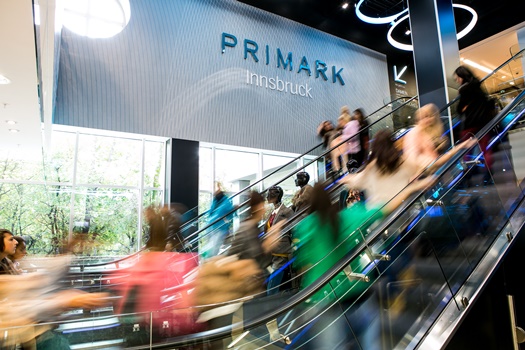Russia was another key destination; today, the country is a bit challenging; Far East China is still extremely attractive but there are so many Western companies investing there that it is quite tough to emerge and succeed. Many retailers believe in the going global strategy but it is tough to determine where, how, and how to limit the risk.
Many mass-market retailers, such as the ones that were created in the 70s are struggling because of the saturation in real estate, e-commerce and so on. If I take France for example, even though it’s worse in many other countries, the markets are around zero in volume, you still create about 3% new square meters per year and you take let’s say half a point per year towards the internet and e-commerce. It means that the turnover per square meter will decrease, if you do nothing, by 3.5% per year. This is true in all the western countries; for real estate and for retailers, it is really a challenge to merge more and be more accurate with where you put your money and what kind of format you want to develop.
 @Andresr_2014 used under license from Shutterstock.com
@Andresr_2014 used under license from Shutterstock.com
What do you think of omni-channel marketing and the fact that online needs to meet offline? The world of tomorrow will be fully cross-channeled; there is no question about it. Customers embrace this trend much more than retailers do. In the customer research we carry out, customers are quite clear that they prefer to combine channels and they believe retailers who do not adopt this strategy are old-fashioned. I would say that in a cross-channel world, the store of tomorrow has to be experiential or based on relation discovery and immersive experience.
Omni-channel is of course the future of retail but what does this mean for the store? Most retailers do not know whether they should focus on online or offline, or blend both channels which is quite tough. When you are competing with amazon, it makes sense to try to differentiate. Some retailers believe that, because of amazon and other retail giants; they need to bring their stores at the same level of customer experience in terms of efficiency, frictionless experience and so on.
The answer to the question influences the size of store and location. Some industries, such as electrical goods, are fighting with this question today. You obviously still need stores for complex electrical goods purchases. Darty or Best Buy are doing quite well, but then other questions arise: Do you need as many stores? Do they need to be as big? Will they reach the same level of costs? Will they include the same range of products? Do you need to have in-stock products? The answers are not obvious.
In a way you have a showroom store with an extract of the range and customers come to have discussions with the sales people to be advised about their purchase. On the other hand, as Regis Schulz, CEO of Darty says: “If people go to amazon or darty.com, they can order extremely quickly in a simple way, deliver within one day and have their product installed.” This is completely frictionless and efficient.
How important are logistics to bricks-and-mortar stores and online? The world's best distributor today is amazon. They are setting completely new standards in terms of excellence and they will force everyone to narrow the gap in terms of efficiency. The amazon standards imply that you have increasingly less out-of-stock products or that, at least, it is extremely clear what is in stock and what is not, and how long it will take to get the product delivered–you have to have an extremely clear promise about that and to strictly respect the promise. Many bricks-and-mortar retailers and many pure players today are pretty far from having the level of excellence that would be required to reach this level of efficiency.
What differentiates Dia-Mart Group from its competitors? The main thing is that our activities are consulting and research but our mind set is retail, we are above all retailers. All of the directors, whatever the business or practice, are former retailers, from Decathlon, Auchan; I do not hire consultants, I hire retailers and then I transform them into consultant researchers. Our ambition is to say that we are the best at blending the two worlds, we have the pragmatism and the operational knowledge of retail and we are as any consultant able to do project management.
 @Thomas Steinlech
@Thomas Steinlech
In your opinion, what will be the new trends in the retail industry in the coming years? For mature markets, I think the two drivers for performance will be marketing intensity and emotional added value. People want to be stimulated and they look for emotion and pleasure when shopping. Surprisingly, when you are in an economic crisis, people don't go back to rational behavior and functional value for money; they remain extremely sensitive to pleasure. The retailers that manage to succeed are those that manage to have such a strong marketing intensity, strong brand content, and are able to afford themselves the luxury of a price premium. Nespresso is a fantastic example; it is incredibly expensive while at the same time very good and addictive.
Some brands manage to create an amazing level of marketing contents and then escape the price pressure a bit. Most retailers however, have to create a blend between good emotional added value and price. The most striking example today is Primark. Shopping at Primark is not based on rational behavior but rather implies emotionally driven purchases and you can do it because it is so cheap. People love it because Primark is probably the one brand who combines in the most fantastic way today, pleasure and price.















